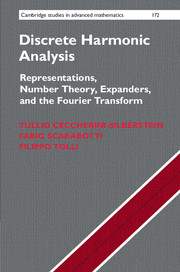Bibliography
Published online by Cambridge University Press: 01 June 2018
- Type
- Chapter
- Information
- Discrete Harmonic AnalysisRepresentations, Number Theory, Expanders, and the Fourier Transform, pp. 555 - 562Publisher: Cambridge University PressPrint publication year: 2018



